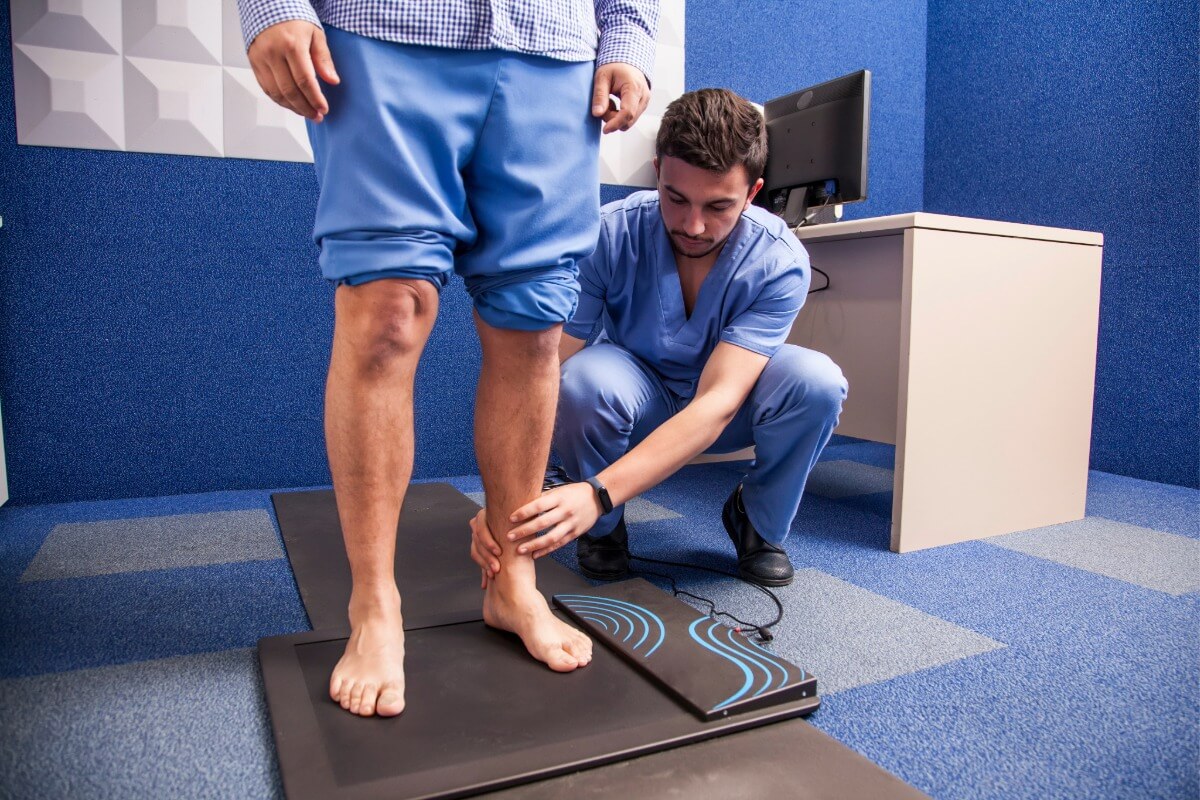Improve Your Balance & Stability: Treatments for Foot & Ankle Problems

Ever feel a little unsteady on your feet? Maybe you've noticed yourself grabbing for support when reaching for something high on a shelf, or perhaps you avoid uneven terrain for fear of losing your balance. Good balance and stability are essential for navigating the world safely and confidently. Unfortunately, foot and ankle problems can throw off your equilibrium, increasing your risk of falls and injuries.
This article explores the connection between foot and ankle problems and balance, highlighting treatment options and self-care practices that can help you regain your footing (pun intended!) and move with confidence.
Why Balance Matters: Keeping Your Feet Steady
Balance is the ability to maintain your center of gravity over your base of support (your feet). It allows you to walk, run, climb stairs, and perform everyday activities without feeling wobbly or off-kilter. A healthy balance is also crucial for preventing falls, which are a significant concern, especially for older adults.
Foot and Ankle Trouble: The Wobbly Culprit
Many foot and ankle problems can significantly impact your balance and stability. Here's how:
- Pain: When your feet or ankles hurt, it can alter your gait and how you distribute your weight, leading to instability.
- Weakness: Weak muscles in the feet and ankles can make it difficult to maintain proper posture and control your movements, increasing your risk of tipping over.
- Limited Range of Motion: Stiffness or limited movement in the ankle joint can restrict your ability to adjust your body position and maintain balance on uneven surfaces.
- Proprioception Issues: Proprioception is your body's awareness of its position in space. Certain foot and ankle conditions can affect proprioception, making it harder to sense where your feet are positioned relative to the ground and impacting balance.
Common foot and ankle problems can affect balance:
- Plantar Fasciitis: Inflammation of the plantar fascia ligament in the foot can cause heel pain and make walking uncomfortable, leading to altered gait and balance issues.
- Arthritis: Degenerative joint disease in the ankle can cause pain, stiffness, and limited range of motion, all of which can contribute to balance problems.
- Ankle Sprains: While most sprains heal, if not properly addressed, they can sometimes lead to chronic instability, impacting balance.
- Peripheral Neuropathy: Nerve damage, often caused by diabetes, can affect sensation in the feet, making it difficult to feel the ground and maintain proper balance.
If you're experiencing foot or ankle problems and find yourself struggling with balance, it's important to seek professional help from a podiatrist.
Treatments for a Firmer Footing: Regaining Balance and Stability
The good news is that effective treatment options are available to help improve balance and stability when foot and ankle problems are the culprit. Here's what a podiatrist might recommend:
- Physical Therapy: A personalized exercise program can target specific weaknesses, improve flexibility, and enhance proprioception, leading to better balance. Exercises may include balance training, foot and ankle strengthening exercises, and core strengthening exercises for overall stability.
- Orthotics: Custom shoe inserts can provide support, improve alignment, and promote stability by correcting imbalances in the feet. Orthotics can be particularly helpful for conditions like plantar fasciitis and certain types of arthritis.
- Bracing: For specific conditions like chronic ankle instability, braces can provide additional support and stability during activities.
- Pain Management: Addressing pain is crucial for improving balance. Depending on the cause of pain, your podiatrist might recommend medication, physical therapy modalities like ultrasound or electrical stimulation, or other interventions to manage pain and improve weight distribution.
5 Common Foot and Ankle Problems You Shouldn't Ignore (and How to Treat Them)
Taking Charge: Self-Care Practices for Better Balance
In addition to professional treatment, incorporating self-care practices into your daily routine can significantly improve your balance and stability in the long run.
- Regular Exercise: Low-impact exercises like walking, swimming, or tai chi can strengthen your muscles, improve coordination, and enhance proprioception, all of which contribute to better balance.
- Balance Training: You can incorporate specific balance exercises that challenge you to maintain a steady position on one leg, wobble boards, or other balance training tools into your routine a few times a week.
- Maintain a Healthy Weight: Excess weight puts additional stress on your joints and can contribute to balance problems. Losing weight or maintaining a healthy weight can significantly improve your overall stability.
- Wearing Proper Footwear: Choose shoes with adequate arch support, a stable sole with a wide base, and proper cushioning. Avoid shoes with high heels or worn-out soles.
Conclusion: Taking Control and Stepping with Confidence
Foot and ankle problems can undoubtedly affect your balance and stability. But remember, you're not powerless! By seeking professional help from
Don't Let Foot Pain Hold You Back! Regain Your Balance with Expert Care from Diablo Foot & Ankle's Experienced Podiatrists. Schedule Your Appointment Today! Call Now at (925) 464-1982 or Click Here to Schedule Online!
Related articles
Request your podiatry consultation now
Fill out our contact form for a prompt call back. Diablo Foot & Ankle: Premier podiatry group in Walnut Creek & Antioch

.svg)

.svg)
.svg)





